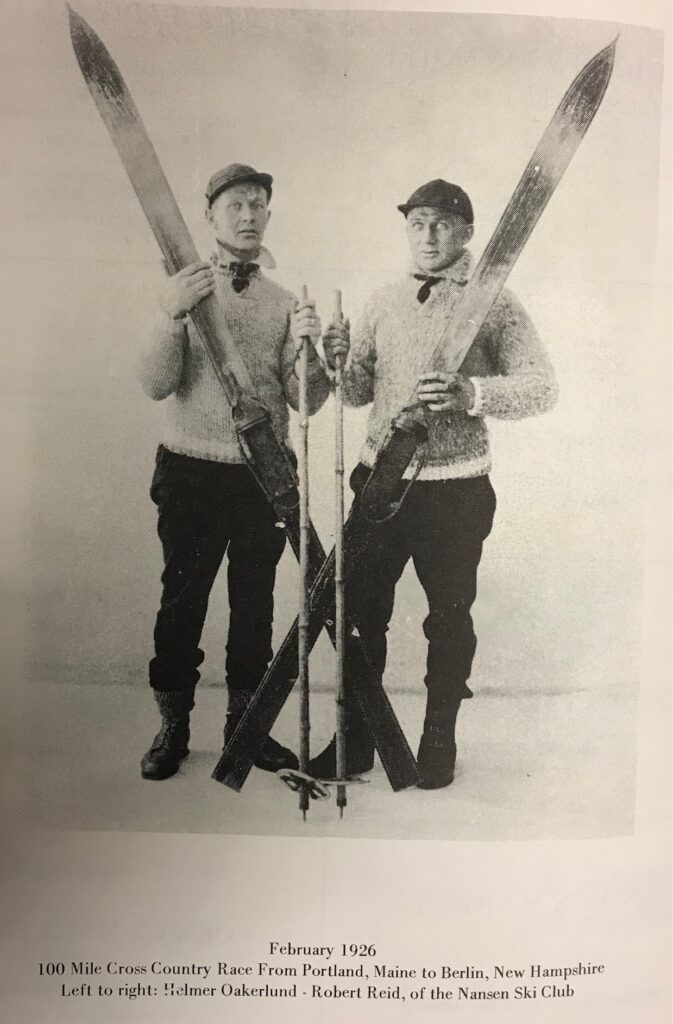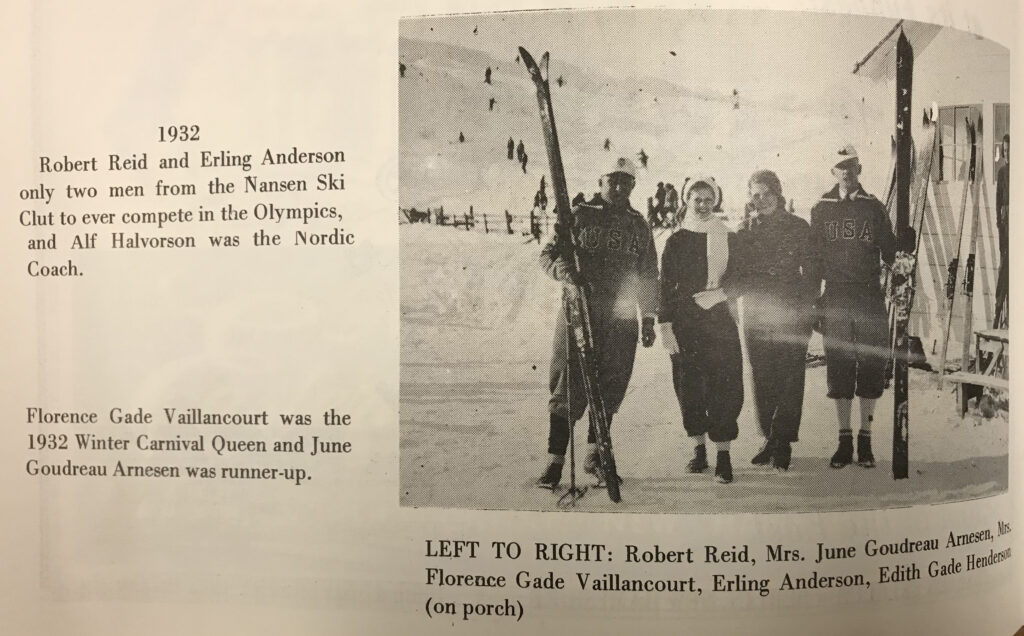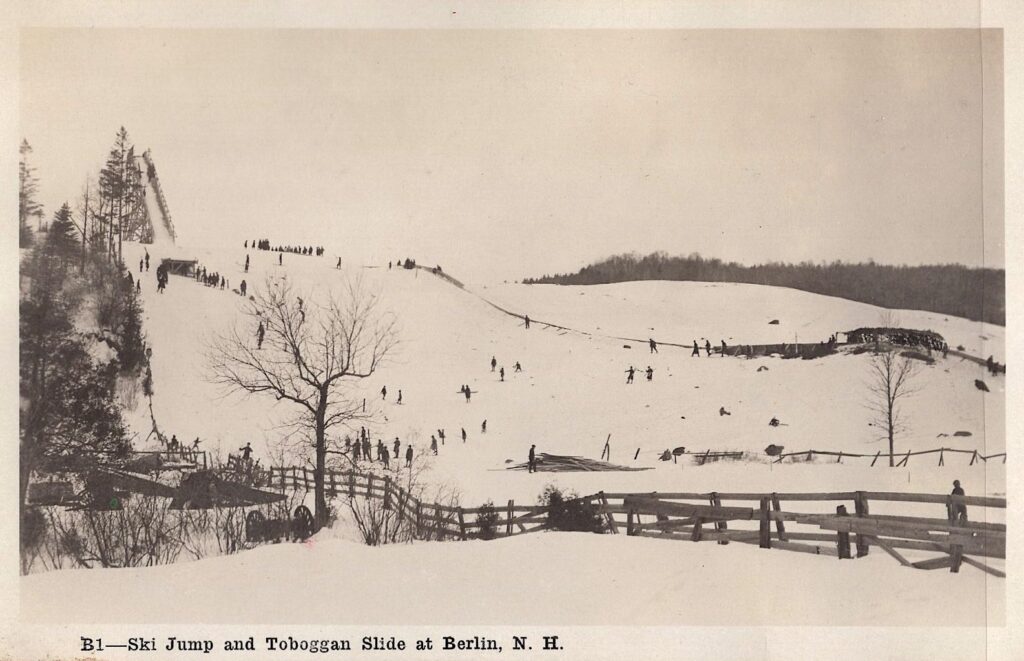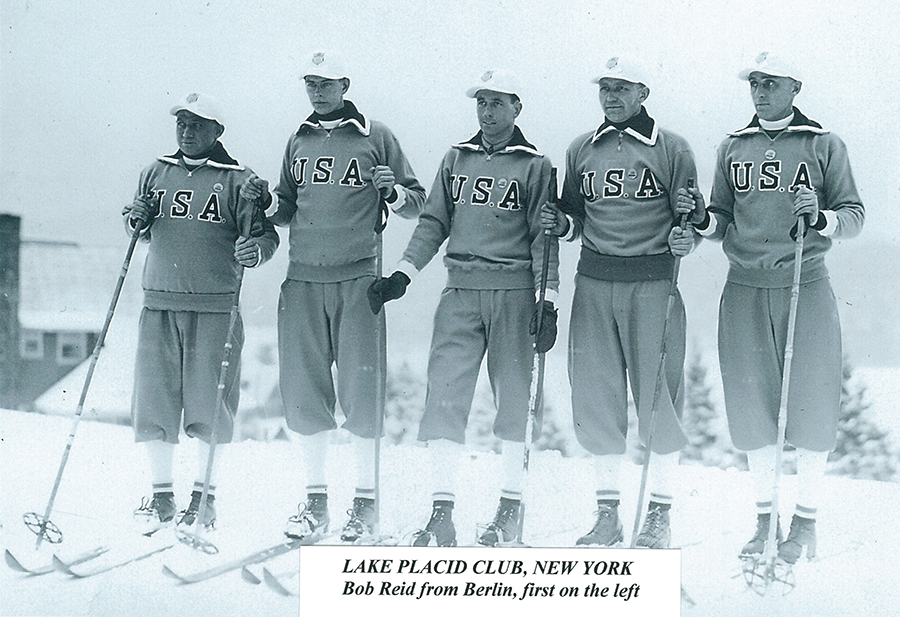Scott Halvorson
Nansen Ski Club, Berlin, NH
Pembroke, NH
shalvor22@gmail.com
Nansen – More Than Ski Jumps
The Nansen Ski Club, of Berlin, NH, continues to make great strides in resurrecting its ski jumping heritage with the restoration of the “Big Nansen” and the building of the “Little Nansen”, but the Club has been historically much more, with arguably their cross country skiing legacy even stronger. Although the Club dominated Eastern ski jumping in the early part of the twentieth century all the way through the 1920’s, and had many Class A jumpers after that, their only Olympic participants were in cross country, in 1932, in Lake Placid, NY. Robert Reid and Erling Anderson were the athletes and Alf Halvorson was their coach.
Cross country skiing is intrinsic to Berlin as its Scandinavian forebears brought this activity over and formed this earliest of clubs, congregating around skiing, whether it was traversing across town, skiing down a slope, or leaping off a hill.
The Nansen Winter Carnivals were legendary and attracted the very best in both jumping and cross country and the Club was never shy about promoting spectacles in both disciplines.
One such spectacular event was “The Mount Washington Marathon Ski Run” a race that was first held as part of the 1923 Winter Carnival and continued for a number of years afterward.
It started four miles up the Mt. Washington Carriage Road, at the “Halfway House”, which was a toll house and a “refuge” located right below tree line (destroyed by fire in 1984) and continued down to the Glen House before following the Peabody River to Gorham and culminating at Paine’s Hill, in Berlin, at the site of the then “highest ski jump in the East,” the precursor to the “Big Nansen” which was built a few miles north in 1937. To quote the 1923 Winter Carnival program “…the total distance is over twenty miles and presents a worthy exercise for the powers of the all-around ski man.”
This race was held for a number of years with the trophies being donated by luminaries such as then Secretary of War, John Wingate Weeks; the Boston Post; and W.R. Brown, head of Brown Company, Berlin’s primary employer. Participants came from all over the East and Canada, and Nansen athletes usually bade very well with Robert Reid winning in 1924.
Perhaps feeling like racing down a mountain, as part of a twenty mile race, wasn’t quite enough, in 1926 the Nansen Ski Club proposed a 100 mile cross country race featuring two of their best, who had dominated the sport in the U.S. and Canada for several years, Robert Reid and Helmer Oakerlund. The race started on February 11th, 1926 in Portland, ME and concluded at City Hall in Berlin, NH on February 14th. The race has become known as “100 Miles of Hell on Skis”, as it began in one of the worst blizzards in history that claimed at least twelve lives, and had a persistent North Wind that plagued racers throughout the race. Robert Reid won the contest, collapsing at the end, finishing 8 minutes ahead of the next competitor. The thought of making this an annual event was quickly dismissed as the Club was just grateful that the participants survived.
That’s just a couple of the noteworthy events that grabbed old headlines and made the Nansen Ski Club renown. The stories that aren’t publicized, however, that many of the readers know only too well, are the everyday efforts that go into just keeping a ski club vibrant and relevant. I am very new to this effort but the Nansen Ski Club has existed for more than 130 years because somehow, even against all obstacles, different people stepped up and plodded forward, providing the lifeline. The Nansen Ski Club has provided recreational cross country skiing to the community continuously even when depressions hit, their ski jumps abandoned, their trail network lost, and a pandemic hit. Most of the people responsible are not known. And yet we are still talking about the Nansen Ski Club, with relevance and reverence, and the great promise ahead, because of them.



